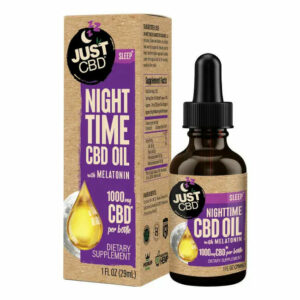CBD oil is legal in Arizona. It has been legal for over a decade now. It must be extracted from hemp and has 0.3% THC. Manufacturers and users don’t need licenses to buy or sell CBD oil in Arizona.
Like the other USA states, Arizona has rules on CBD products. CBD is legal in the USA, but each state has its restrictions. Cannabis plants get a bad reputation because of marijuana. When people talk about cannabis, they refer to marijuana in most cases. In most countries, marijuana is illegal. Marijuana has been more widely used than CBD; this makes it difficult for CBD to penetrate new markets without stigmatization. This article will explore the legality of CBD oil in Arizona and the difference between CBD and THC.
Is CBD Oil Legal in Arizona
CBD oil and other CBD products are legal in Arizona. Klofas& Letteney (2012) discovered that in 2010, Proposition 203 was passed, commonly known as the Medical Marijuana Bill. This bill gave room for exploring marijuana by-products like THC and CBD. The bill also made it legal for Arizona residents to consume CBD oil and other CBD products. In 2014 a ruling was made for medical CBD for epilepsy. Stubbs (2014) reported that in 2014, a farm bill was passed that allowed further research on CBD for medical purposes. CBD oil is legal if extracted from stalk fiber mature stalks and sterilized hemp seeds. THC levels should be within the allowed limit of 0.3%.
CBD and THC: what’s the Difference
CBD and THC are the common compounds found in cannabis plants. The most common cannabis plants are marijuana and hemp plant. According to Johnson (2019), CBD is abundant in hemp plants, while marijuana is rich in THC. Marijuana is illegal because it induces a psychoactive high. CBD products from marijuana also are illegal because they have high THC levels. In many countries, the allowed amount of THC is 0.3%. CBD products from the hemp plant are legal because they meet the required THC level.
Uses of CBD Oil
Relieving Pain and Inflammation
CBD can relieve pain and inflammation because CBD binds with ECS receptors, reducing neurotransmitters’ breaking down. When one feels pain, the body releases an endocannabinoid like anandamide, providing pain relief; these endocannabinoids tend to break down fast. Taking CBD will slow down the rate at which these endocannabinoids break down. Argueta (2020) found that CBD oil may help with chronic back and nerve pain.
Soothing Anxiety and Depression
Anxiety, stress, and depression are signs of low serotonin in the body. Serotonin is a body chemical responsible for regulating body functions like behavior, digestion, and mood. Ponton et al. (2020) reported that high serotonin levels would lead to a better mood reducing anxiety, stress, and depression. Antidepressants work by affecting the level of serotonin, De Gregorio et al. (2019) showed that CBD might work as antidepressants.
Sekar et al. (2019) indicated that in 2018 FDA approved Epidiolex, a highly refined CBD oil, to treat Dravet and Lennox-gestalt, rare genetic seizures for individuals above age 3.
Aiding Sleep
Quality sleep is characterized by at least 7 hours in adults and 10 hours in children. But, insomnia, the major cause of sleeplessness, can make it difficult to achieve this amount of sleep. Insomnia is caused by stress, pain, or medications. To sleep, you need to be relaxed as possible. Taking CBD oil can help alleviate many conditions like stress and pain. CBD can also induce calmness leading to dozing off.
How to Take CBD Oil
Sublingual Method
The sublingual method involves taking CBD oil as a tincture. The oil comes with a dropper used to measure and administer the oil. Place a few CBD oil drops under the tongue and hold for at least 60 seconds. The effect can be felt after 30 minutes. This allows the oil to dissolve into the capillaries and tissues, where it’s absorbed into the bloodstream. The sublingual method bypasses the metabolism process making it faster to take CBD oil. You can also take CBD oil sprays by spraying them under your tongue.
Inhalation Method
CBD oil can be taken by inhalation using vape pens. CBD is absorbed into the bloodstream in the lungs with oxygen. The effect of CBD is felt after 15 minutes. This method effectively looks for a fast remedy, like dealing with anxiety. Vaping is very discrete because it does not emit smoke; thus can be taken anywhere, but the long-term effect of vaping is yet to be known.
Ingestion Method
The ingestion method is when CBD undergoes metabolism before being absorbed into the bloodstream. CBD oil is ingested in the form of CBD capsules and softgels. You can also ingest CBD oil by mixing it with your food or drinks like coffee, cocktails, and smoothies. Even if one has a faster metabolism, the easiest one can feel the effect of CBD is after 2 hours. You can take fatty acids like avocado oil to protect CBD from the CPY450 enzyme, which reduces its concentration. According to Patel & Lio (2021), the CPY450 also breaks down CBD in the liver in a process known as the “first-pass effect.”
Topical Method
The topical method involves using CBD oil for external use. It can be CBD creams, CBD lotions, or CBD palms. This method effectively alleviates pain is using CBD oil as a beauty product. Apply CBD oil to the affected areas and massage it for absorption.
Conclusion
CBD oil is legal in Arizona, like the many states of the USA that have legalized CBD products. You don’t need medical approval to buy CBD oil. CBD oil can alleviate pain and inflammation, soothe stress, anxiety, and depression, treat rare seizure conditions, and aid sleep. Understanding the difference between marijuana and hemp plants will help you buy the right CBD oil. When marijuana is used to produce CBD, the resulting CBD has high THC levels, and it’s illegal in many countries.
References
Argueta, D. A., Ventura, C. M., Kiven, S., Sagi, V., & Gupta, K. (2020). A Balanced Approach For Cannabidiol Use In Chronic Pain. Frontiers In Pharmacology, 11, 561.
De Gregorio, D., Mclaughlin, R. J., Posa, L., Ochoa-Sanchez, R., Enns, J., Lopez-Canul, M., … & Gobbi, G. (2019). Cannabidiol Modulates Serotonergic Transmission And Reverses Both Allodynia And Anxiety-Like Behavior In A Model Of Neuropathic Pain. Pain, 160(1), 136.
Johnson, R. (2019). Defining Hemp: A Fact Sheet. Congressional Research Service, 44742.
Klofas, J., & Letteney, K. (2012). The Social And Legal Effects Of Medical Marijuana: State Legislation And Rules. Working Paper, Center For Public Safety Initiatives, Rochester Institute Of Technology.
Patel, P. M., & Lio, P. A. (2021). Safety And Sourcing Of Topical Cannabinoids: Many Questions, Few Answers. The Journal Of Clinical And Aesthetic Dermatology, 14(8), 49.
Ponton, J. A., Smyth, K., Soumbasis, E., Llanos, S. A., Lewis, M., Meerholz, W. A., & Tanguay, R. L. (2020). A Pediatric Patient With Autism Spectrum Disorder And Epilepsy Using Cannabinoid Extracts As Complementary Therapy: A Case Report. Journal Of Medical Case Reports, 14(1), 1-7.
Sekar, K., & Pack, A. (2019). Epidiolex As Adjunct Therapy For Treatment Of Refractory Epilepsy: A Comprehensive Review With A Focus On Adverse Effects. F1000Research, 8.
Stubbs, M. (2014). Conservation Provisions In The 2014 Farm Bill (PL 113-79). Congressional Research Service, 1, 34.
Ksenia owns her own dermatology clinic in London and is a nutritionist consultant. Ksenia is also a regular contributor to popular media outlets. In her spare time, she enjoys horse riding, clay pigeon shooting, rummaging in vintage stores and countryside walks.
[email protected]
- Mushroom Capsules By Glowbar London-Unlocking the Magic of Mushroom Capsules: A Journey with Glowbar London’s Wellness Wonders - October 17, 2023
- Does CBD Hemp Oil Have Side Effects? - February 22, 2023
- Beverages you can add CBD oil - October 22, 2022
















